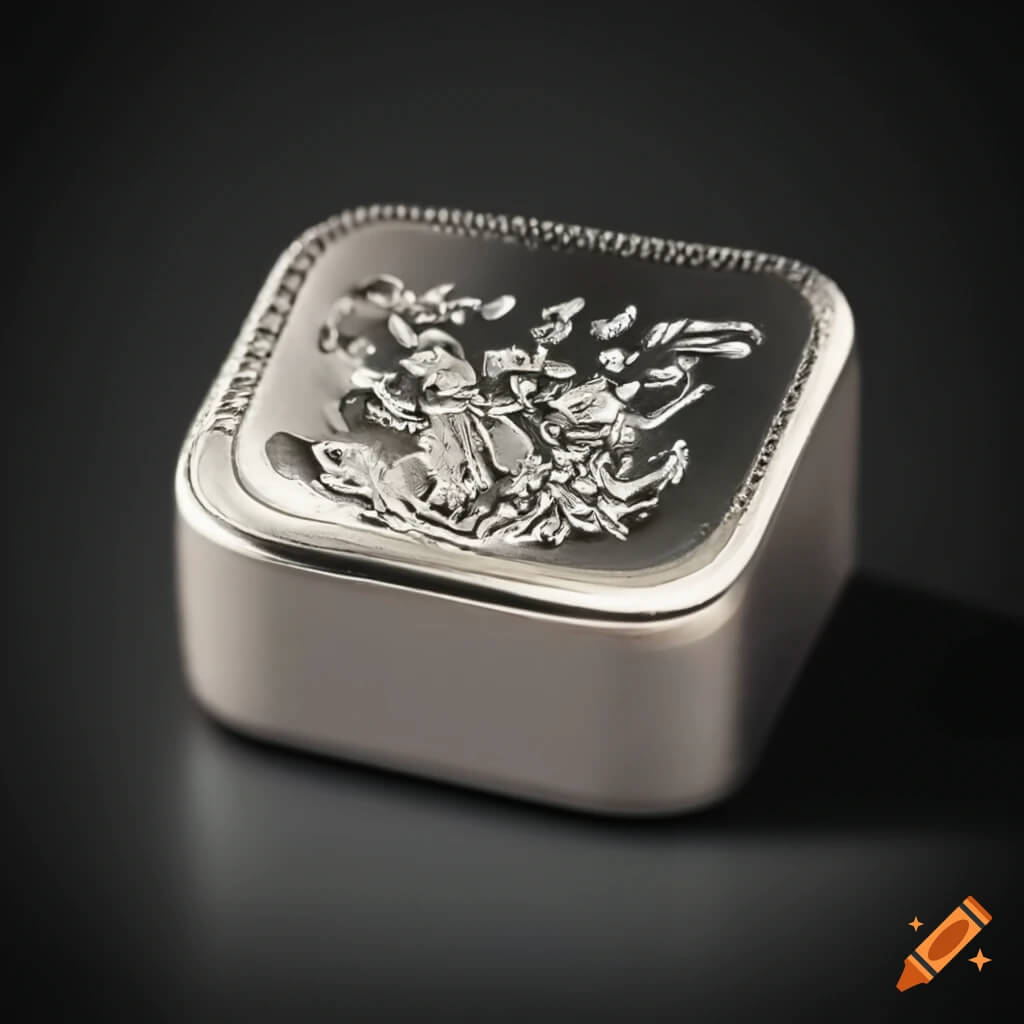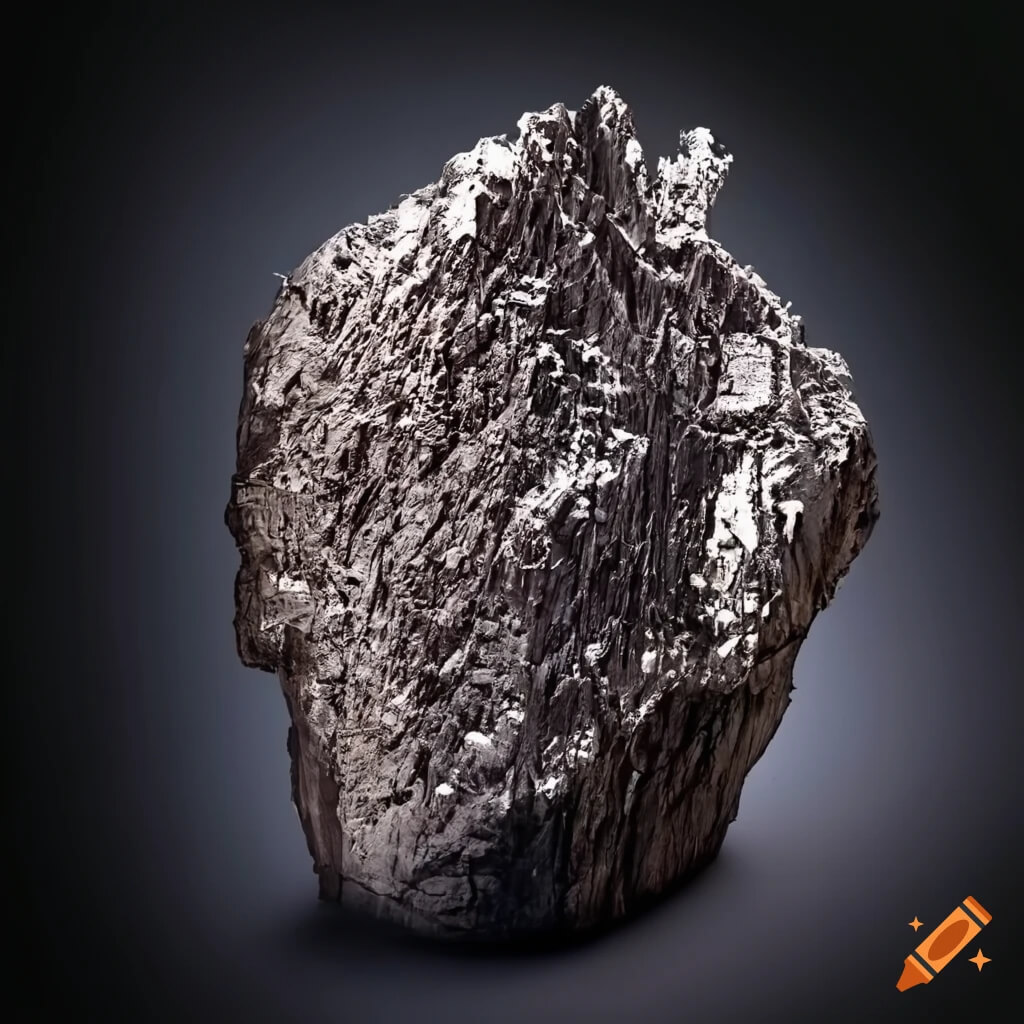Silver
Silver is a precious metal that has a wide range of applications in various industries. Its shiny surface, high electrical and thermal conductivity, as well as resistance to corrosion and oxidation, make it a valued material for jewelry, electronics, medicine, and other fields. In this article, we will explore the properties of silver, its origin, mining, processing, uses, and its role in society. We will also focus on investment opportunities in silver and its historical value.
What Is Silver
Silver is a chemical element with the symbol Ag (from the Latin argentum, derived from the Greek argos – white) and atomic number 47 on the periodic table. It belongs to the transition metals and is known for its high electrical (the best of all metals) and thermal conductivity. Silver is often found in the form of ore or mineral and is white, shiny, and soft. It is also one of the most reflective substances, meaning it can reflect most visible light.

Figure 1: Silver Ingot (source: Craiyon)
Origin of Silver
Silver, like other elements, such as gold, evolved and formed due to processes in the universe. Billions of years ago, heavier elements were created in the cores of stars during nuclear reactions. These elements were later released into space during supernova explosions that occur at the end of a star's life cycle. Material containing silver dispersed into the surrounding interstellar space, and thus, silver ended up on Earth.
Silver has been known and used by humans for thousands of years. The first evidence of silver mining and processing dates back to the 4th millennium BCE in the regions of Mesopotamia and Egypt. Silver was valued for its beauty and rarity and was used as currency, jewelry, and religious objects. Later, silver became an important material for coins and minting.
Properties of Silver
Silver has several unique properties that distinguish it from other metals. One of its main properties is high electrical and thermal conductivity. Silver is the metal with the highest electrical conductivity, followed by copper and gold. Since silver (and gold) is expensive, it is mainly used for special applications in electronics, etc. More abundant copper, aluminum, and their alloys are used for traditional electrical wiring, etc.
Silver also exhibits high light reflectivity and can reflect up to 95% of visible light. This property is utilized in mirrors and photographic films.
| Property | Value |
|---|---|
| Color | White/silver shiny metal |
| Hardness | 2.7 on the Mohs scale |
| Melting | 961.8 °C |
| Boiling | 2162 °C |
| Density | 10.49 g/cm³ |
| Thermal conductivity | 429 W/(m·K) (at 25 °C) |
| Electrical conductivity | 61.2 × 106 S/m |
| Modulus of elasticity | 83 GPa |
| Solubility | Insoluble in water |
| Corrosion resistance | Resistant to corrosive effects |
Mining and Processing of Silver
Mining and processing of silver are processes that allow obtaining pure silver for further use. Silver ore is typically mined in the form of deposits found in various parts of the world. Among the largest producers of silver are Mexico, Peru, China, Russia, and Australia.

Figure 2: Silver Ore (source: Craiyon)
There are several methods of silver mining, with the most common being mining. In mining, the ore is crushed, and chemically processed to separate the silver metal from other minerals. Various techniques, such as flotation, electrolytic refining, or hydrometallurgical processing, are then used to achieve pure silver.
After obtaining pure silver, further processing and refining are carried out to remove any impurities. To achieve higher quality, silver is sometimes refined multiple times. The result is silver metal with high purity, which can be used in various industries.
Examples of Silver Utilization
Silver has a wide range of uses due to its properties and resistance. Here are ten areas where silver is used:
- Jewelry: Silver is a traditional and popular material for jewelry production. Due to its luster, durability, and affordability, silver jewelry is a favorite accessory.
- Electronics: In the electronic industry, silver is used to manufacture conductors, contacts, and components. Its high electrical conductivity is crucial for the proper transmission of signals and electricity.
- Photography: Traditional photographic films contain silver grains that react to light and allow image recording.
- Mirrors: Silver is a key material for mirror production due to its high light reflectivity. A thin layer of silver is applied to a glass plate, creating a reflective surface.
- Medicine: Silver has antimicrobial properties, making it useful in medicine. It is used in the form of silver threads for stitching wounds, silver dressings, and tools that help prevent infections.
- Food Industry: Silver nanoparticles are employed in food packaging to extend the shelf life of products by preventing bacterial growth.
- Clothing: Silver nanoparticles are integrated into fabrics for their antibacterial properties, reducing odor and maintaining hygiene in clothing.
- Currency: Throughout history, silver has been used as currency and minted into coins. While not as common today, some countries still produce silver coins for collectors and investors.
- Solar Panels: Silver is used in the production of photovoltaic cells for solar panels, contributing to the generation of renewable energy.
- Water Purification: Silver is effective in purifying water by eliminating bacteria and other harmful microorganisms.
These examples illustrate the versatility and importance of silver in various aspects of our lives.
Silver in Society
Silver has played a significant role in human society throughout history. Its use as a form of currency, in religious ceremonies, and for ornamentation has contributed to its cultural importance. In various cultures, silver is associated with lunar symbolism and considered a metal of value.
In modern society, silver continues to be a valuable and sought-after commodity. While no longer the primary material for currency, silver is still used in the production of coins for collectors and investors. The demand for silver in industries such as electronics, healthcare, and renewable energy also contributes to its economic importance.
Investing in Silver
Investing in silver can be a strategy for diversifying a financial portfolio. Silver, like gold, is considered a precious metal and is often used as a store of value. Investors can buy physical silver in the form of coins or bars, invest in silver mining companies, or trade silver futures on commodity exchanges.
It's essential for investors to understand the factors that influence the price of silver, including industrial demand, economic conditions, and geopolitical factors. The value of silver can be more volatile than traditional investments, so careful consideration and research are crucial for those considering silver as part of their investment strategy.
| No. | Company | Ticker | Headquarters | Stock Exchange |
|---|---|---|---|---|
| 1 | Industrias Penoles SAB de CV | N/A | Mexico City, Mexico | Bolsa Mexicana de Valores (BMV) |
| 2 | Fresnillo PLC | FNLPF | Mexico City, Mexico | London Stock Exchange (LSE) |
| 3 | Pan American Silver Corp. | PAAS | Vancouver, British Columbia, Canada | NASDAQ |
| 4 | Wheaton Precious Metals Corp. | WPM | Vancouver, British Columbia, Canada | Toronto Stock Exchange (TSX) |
| 5 | Buenaventura Mining Co. Inc. | BVN | Lima, Peru | New York Stock Exchange (NYSE) |
| 6 | Coeur Mining Inc. | CDE | Chicago, Illinois, USA | New York Stock Exchange (NYSE) |
| 7 | Fortuna Silver Mines Inc. | FSM | Vancouver, British Columbia, Canada | New York Stock Exchange (NYSE) |
| 8 | Hecla Mining Co. | HL | Coeur d'Alene, Idaho, USA | New York Stock Exchange (NYSE) |
| 9 | First Majestic Silver Corp. | AG | Vancouver, British Columbia, Canada | New York Stock Exchange (NYSE) |
Historical Value of Silver
The historical value of silver is rich and diverse. As mentioned earlier, silver has been used as a form of currency for centuries. It played a crucial role in various monetary systems, including the silver standard and bimetallism. The discovery of vast silver deposits in the Americas, particularly in Mexico and Peru, had a significant impact on global trade and economies during the colonial period.
Over the years, silver has continued to be a sought-after metal with cultural, economic, and industrial significance. Its role in various historical events and its use in art and craftsmanship further contribute to its enduring historical value.
Conclusion
Silver's unique properties, historical significance, and diverse applications make it a fascinating and valuable metal. Whether used in jewelry, electronics, medicine, or investments, silver continues to be a metal of importance in the modern world. Understanding its properties, origin, and uses provides insight into the role of silver in society and its enduring appeal.
You Might Be Also Interested
- Gold as a Safe Haven: Navigating Turbulence;
- Price of Gold Surpassed the Historic Record from August 2020 (2023-12-04);
- Copper as a Barometer of the State of the Economy;
- Commodities: A Comprehensive Guide;
- Investment vs Speculation;
- Investment Triangle Golden Rule;
- Stocks: Basics You Need to Know;
- Bitcoin: A Comprehensive Guide;
- Is Buying Stocks a Game of Chance?
- Dividend: What It Is and How to Get Them;
- Inflation: How to Protect Against It.
Based on the original Czech article: Stříbro – co je, vlastnosti, jak se těží, investice do stříbra.
